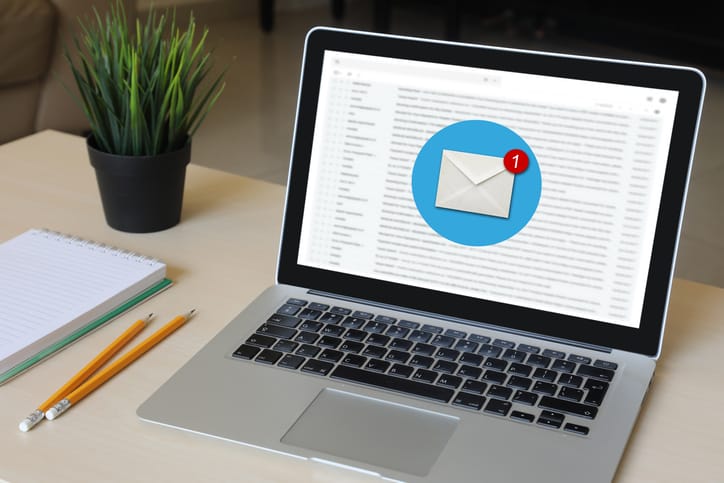Should You Use A/B Testing for Email Newsletters?

Categorized in: B2B Digital Marketing
The internet is a beautiful place to find information on just about anything. But when you’re browsing the web, it’s hard to know which website or email is worth your time.
Most brands have an email newsletter to send to their customers and subscribers. For example, if you subscribe to our blog, we’ll send you an email every time we post a new article. To ensure we don’t overwhelm you with emails, we use A/B testing to figure out the best subject lines, content, images, and more for these emails to be relevant and exciting.
What is A/B testing?
A/B testing measures the performance of your product, website, or blog post to see which one performs better. In email marketing, A/B testing is often used to find the best subject line, content, and other factors that will help you avoid sending out irrelevant emails that will be ignored.
This type of testing can help make sure you’re getting the most out of your email newsletter by ensuring that your message is relevant and exciting for your subscribers. For example, if you have an email about new products coming out in November but it’s currently July, you’ll want to use A/B testing so that your customers won’t be put off by receiving this email too soon and unsubscribing from your list.
Why should you use A/B testing?
There are a few reasons you might want to consider using A/B testing for your email newsletters.
- You may not know which subject lines are most effective because you’re not sure what your customers want to read or how they want their information delivered.
- You may not know which content is most appealing to your audience and what will resonate the best with them.
- You may not know which images will grab people’s attention and make them more likely to click through on an email.
You may not know if specific colors, fonts, or other elements of design could potentially make your emails more appealing to your audience.
How do you start testing your emails?
A/B testing is a straightforward way to improve your email marketing efforts. To start testing your emails, you’ll want to create two different versions of an email. You can do this by editing the subject line, content, and images in one email version while leaving them unchanged.
After you’re done creating each email version, send both versions to a percentage of your subscribers. This will allow you to see which understanding is better received by your subscribers and decide which one should become your regular email.
What are the benefits of using A/B testing?
Using A/B testing can be a great way to determine the most compelling email subject lines, content, images, and more for your newsletter. You can also use it to figure out whether or not you should be sending emails daily, weekly, or monthly. Utilizing A/B testing for your email newsletters can help you maximize the number of people who open and read your emails.
Some factors to consider when deciding whether or not to use A/B testing:
- Is it worth the time?
- Would it make sense for my business?
- Am I able to gather enough data to make a good decision?
- How much do I ask of my prospective customers with my email communications?
But ultimately, using A/B testing is up to you and how important it is for your business. If you’re unsure how to evaluate the benefits of A/B testing, talk with an expert.
When should you start using A/B testing?
The time to start A/B testing is when you find yourself in a situation where you have multiple choices for the same type of content. For example, if you are writing an email with two different subject lines, it’s good to run an A/B test on these to see which is more successful and why.
To make sure that your emails are relevant and exciting for customers, it’s essential to keep your subscribers engaged. With A/B testing, you can figure out the best way to do this. You’ll see what messages work better for your customers and which don’t get as much engagement. Then, when creating new content or newsletters, you will know what works best for your audience.
A/B testing can be as simple as sending two slightly different subject lines or as complex as sending one email campaign to a group of people and another to a diverse group. The use of this process, however, is not without drawbacks.
It’s important to note that the success of your A/B tests will depend on the factors that comprise your email marketing strategy (e.g., your goal and your audience). The best time to start experimenting with A/B testing is when you are just beginning to send emails and have a small subscriber base.
LIKE AND SHARE THIS ARTICLE:



